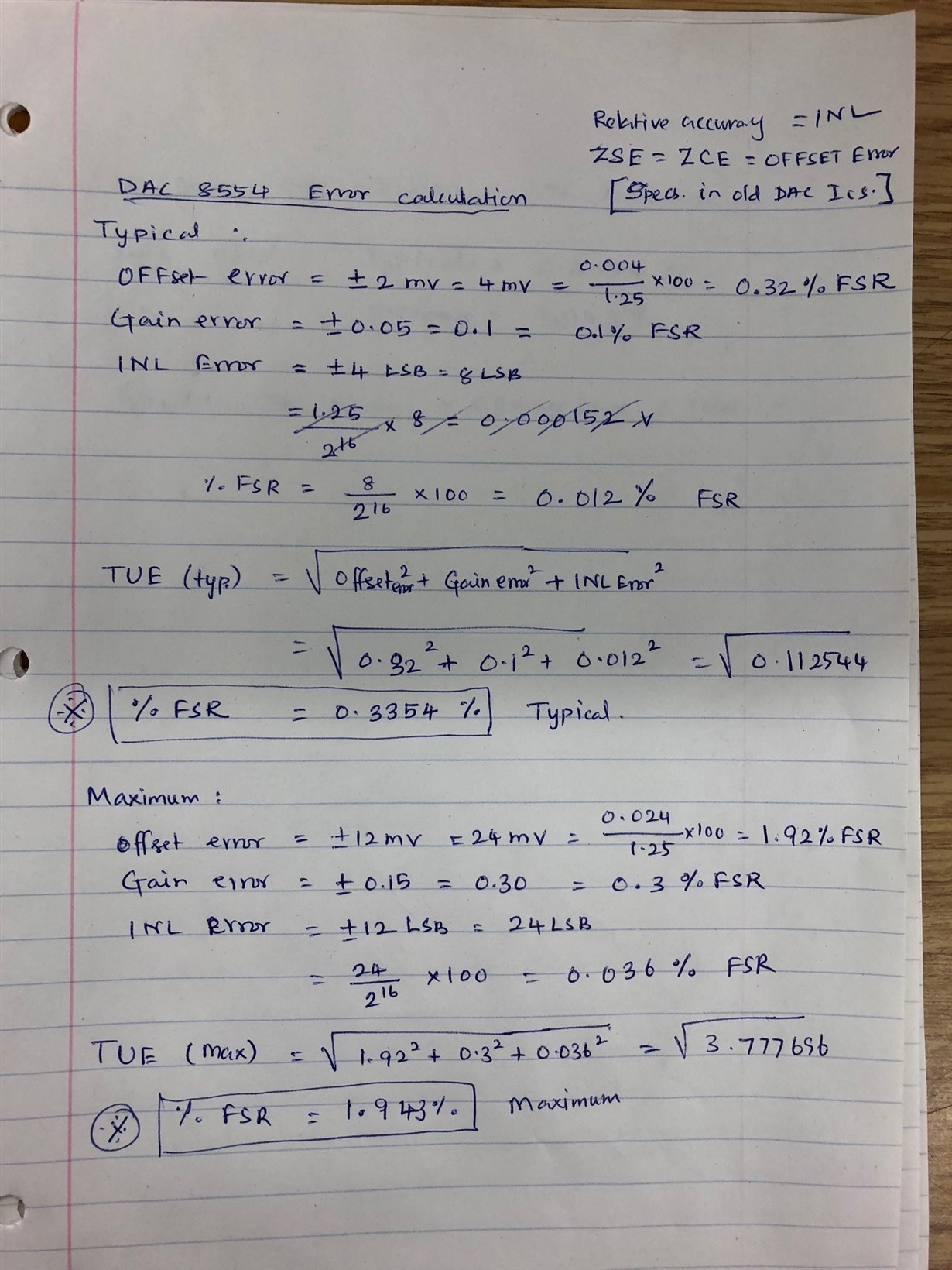Other Parts Discussed in Thread: ANALOG-ENGINEER-CALC
Hi All
Can anyone please help me to calculate the Total Unadjusted Error for DAC8554 chip?
I could not find the INL error and Offset error information from IC datasheet.
My design has 0-1.25V as DAC output voltage and it gets amplified to 0-10V range.
Your help is highly appreciated.


